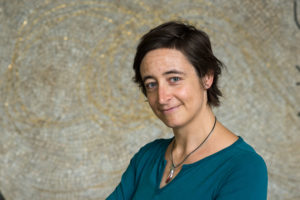Dr Annika Jahnke did her PhD in Environmental Chemistry at the Institute for Coastal Research at the Helmholtz Centre Geesthacht and Lüneburg University. She worked at the Department of Applied Environmental Science at Stockholm University as a postdoctoral fellow and research fellow for 7 years before she returned to Germany as a research group leader and deputy head of the Department Cell Toxicology at Helmholtz Centre for Environmental Research – UFZ in Leipzig. Annika’s current research focus lies on the development and application of novel methods based on silicone “Chemometers” in multimedia environments, combined with advanced chemical analysis and bioanalytical profiling of the sampled mixtures of pollutants. Her main goal is to study chemical activities in order to describe processes such as bioaccumulation in the aquatic environment, internal exposure and effects in marine mammals and human exposure (CHEMO-RISK project). Additionally, the impacts of environmental weathering on the transport, fate and effects of microplastic in the marine environment (WEATHER-MIC project) is in Annika’s focus.
Read Annika’s Emerging Investigator article “Effect-based characterization of mixtures of environmental pollutants in diverse sediments” and read more about her in the interview below:
Your recent Emerging Investigator Series paper focuses on effect-based characterization of mixtures of environmental pollutants in diverse sediments. How has your research evolved from your first article to this most recent article?
My first article was based on my Diploma thesis that investigated alkylphenols in the effluent of a large sewage treatment plant. Since this study, I have focused on very different research areas during my PhD (patterns of polyfluorinated compounds in the coastal atmosphere) and my time as a postdoc and research fellow (development of silicone-based Chemometers to assess aquatic bioaccumulation). Another new aspect has been microplastic-related research. I recently broadened my expertise further by including effect-based tools in addition to chemical analysis, and this paper is the first product of this novel research theme at the department Cell Toxicology at UFZ.
What aspect of your work are you most excited about at the moment?
I particularly like the breadth that I am able to cover right now thanks to a grant that allowed me to take a step further from doing all experiments myself to extending my group quite a bit. This project allows us to work on different aspects of the ”Chemometer” in parallel and to achieve substantial advancements in a reasonable time frame. While extending studies that I initiated in the past, we can also move on to new research questions.
In your opinion, what are the most important questions to be asked/answered in this field of research?
The Chemometer can be very versatile, but it is also subject to substantial methodological challenges that we need to overcome before we can answer a large range of research questions. These questions include the thermodynamics of bioaccumulation in aquatic ecosystems, internal exposure and effects within organisms and the extension to assessing human exposure. We want to cover both advanced chemical analysis and bioanalytical profiling to characterize realistic environmental mixtures of chemicals and provide a scientific basis for improved management of chemicals.
What do you find most challenging about your research?
We currently face a lot of methodological challenges, but addressing them in a team makes it much easier to cope with them and overcome them. It can be challenging to collaborate in very interdisciplinary teams, but the opportunity of learning from each other is great, and it also helps to hone your communication skills and present your work in a way that is better suited for a broad audience.
In which upcoming conferences or events may our readers meet you?
I usually attend the SETAC annual meetings in Europe (sometimes in North America, too), but next year I will have to skip the Helsinki meeting because of a research cruise on the German research vessel SONNE to study microplastic in the North Pacific Ocean.
How do you spend your spare time?
I have two wonderful sons that I like to spend my time with. We like outdoor and sports activities, enjoy good food and interacting with people, so we are always on the go.
Which profession would you choose if you were not a scientist?
I believe in the power of images and that they can tell more than a thousand words. Hence I think right now I would choose to start a small company offering the design of science graphics, which would provide an opportunity of still being involved in science. At high school I thought being an interpreter would be interesting, but I liked natural sciences too, in particular interdisciplinary studies, so environmental science with a focus on environmental chemistry was the perfect match for me.
Can you share one piece of career-related advice or wisdom with other early career scientists?
I think an important aspect is to embrace change and take the opportunity of learning novel skills, exploring new work environments and extending your expertise all the time. Working in an interdisciplinary field is the perfect setting since you always work with experts in different fields from your own, and then you should not feel ashamed of asking seemingly stupid questions to maximize interactions and synergies!











